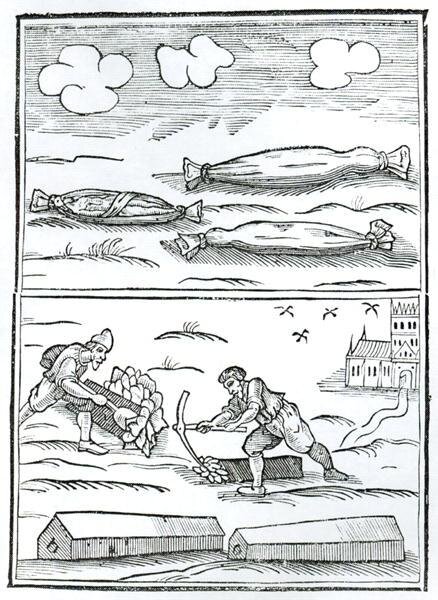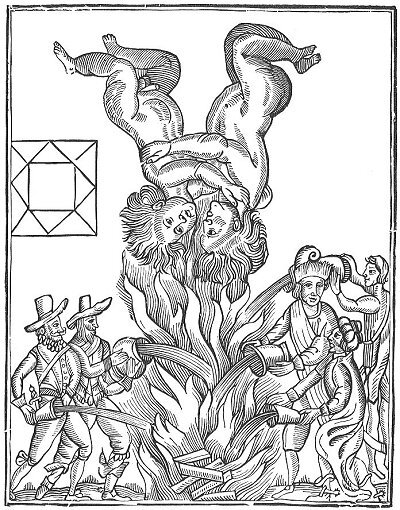William Lilly, Astrology, and the Plagues of London
In 1647, the great Renaissance astrologer William Lilly completed his magisterial Introduction unto Astrology during the plagues of London. In his autobiography, he provides a number of revealing perspectives on these times. The extracts from his autobiography reproduced below give us some historical insight into the ability of astrology to predict plagues.
About the genesis of his Introduction, which he published under the title Christian Astrology, Lilly writes:
In this year 1646, after a great consideration, and many importunities, I began to fix upon thoughts of an Introduction unto Astrology, which was very much wanting, and as earnestly longed for by many persons of quality. […] I thought it a duty incumbent upon me, to satisfy the whole kingdom of the lawfulness thereof, by framing a plain and easy method for any person but of indifferent capacity to learn the art, and instruct himself therein, without any other master than my Introduction. […] The desire I had to benefit posterity and my country, at last overcame all difficulties; so that what I could not do in one year, I perfected early the next year, 1647; and then in that year, viz. 1647, I finished the third book of nativities, during the composing whereof, for seven whole weeks, I was shut up of the plague, burying in that time two maid-servants thereof; yet towards November that year, the Introduction, called by the name of Christian Astrology, was made publick.
As a practicing predictive astrologer, Lilly famously foresaw not only the Great Plague but also the Great Fires of London (1665–1666). These predictions appeared as a series of “hieroglyphic images” appended to his 1651 book, Monarchy or No Monarchy in England, which was published fourteen years before the events they predicted. The “hieroglyphic” images provided a coded astrological language, embedded with astrological truths and asterisms, in order that his judgement might be “concealed from the vulgar”.
In 1666, due to the veracity of his predictions, Lilly was summoned to a Parliamentary Committee “appointed to enquire after the cause of the fires” in order to clear himself of suspicion of arson. With the assistance of the great alchemical scholar, Elias Ashmole, he appeased the committee after clarifying his intentions in the following words:
I was desirous, according to the best knowledge God had given me, to make enquiry by the art I studied [i.e., astrology], what might from that time happen unto the Parliament and nation in general. At last, having satisfied myself as well as I could, and perfected my judgment therein, I thought it most convenient to signify my intentions and conceptions thereof, in forms, shapes, types, hieroglyphics, etc. without any commentary, that so my judgment might be concealed from the vulgar, and made manifest only unto the wise. I herein imitating the examples of many wise philosophers who had done the like.
Having found that the city of London should be sadly afflicted with a great plague, and not long after with an exorbitant fire, I framed these two hieroglyphics as represented in the book, which in effect have proved very true.
Finally, he writes of the assistance he gave to the poor during the Great Plague of London:
Now I come unto the year 1665, wherein that horrible and devouring plague so extremely raged in the city of London. 27th of June 1665, I retired into the country to my wife and family, where since I have wholly continued, and so intend by permission of God. I had, before I came away, very many people of the poorer sort frequented my lodging, many whereof were so civil, as when they brought waters, viz. urines, from infected people, they would stand purposely at a distance. I ordered those infected, and not like to die, cordials, and caused them to sweat, whereby many recovered. My landlord of the house was afraid of those poor people, I nothing at all. He was desirous I should be gone. He had four children: I took them with me into the country and provided for them. Six weeks after I departed, he, his wife, and man-servant died of the plague.
Addendum: The British historian and topographer William Camden (1551–1623) specifies that Saturn and Mars conjoining in Capricorn coincided with the earlier plagues of Europe (i.e., in the fourteenth century). In his monumental Britannia (Latin 1586; English translation, 1610), he states:
And verily about the time when that most mortall Plague which followed the conjunction of Saturne and Mars in Capricorne reigned hotely throughout all Europe in the yeere of our Lord 1348, this towne was so dispeopled by reason of continuall mortalitie there, that whereas before time it was passing well Inhabited and had twelve Churches in it, it can shew now no more than one or two.



